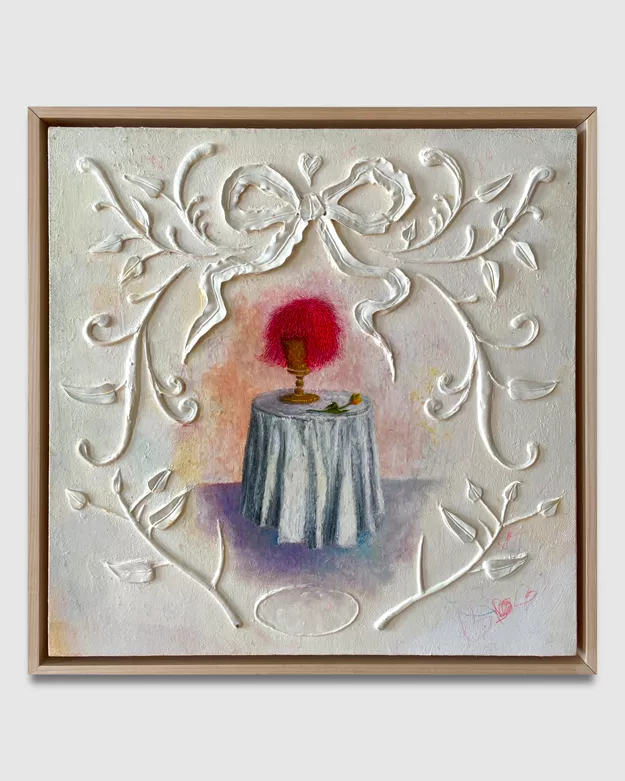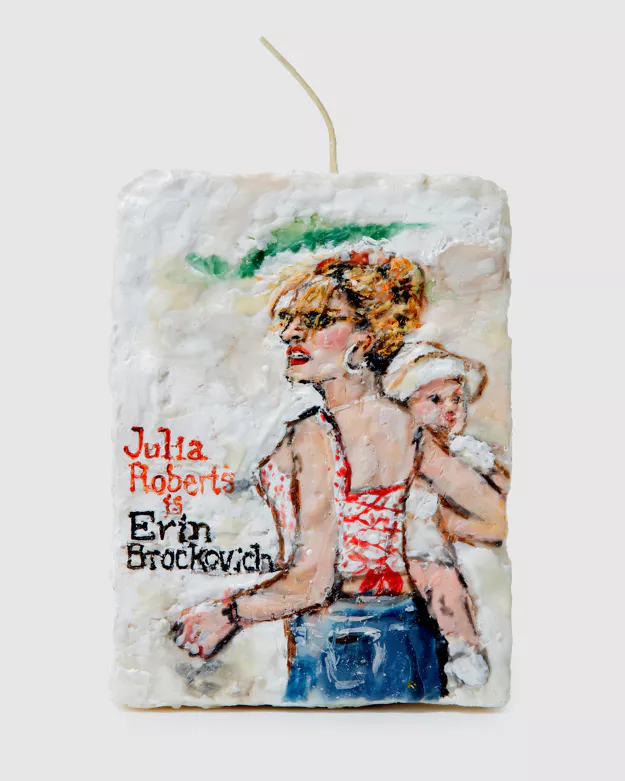About the artwork:
This painting is part of a series of works the artist first creates on paper in preparation for a final work on canvas. The artist's purely abstract artistic language, devoid of any allusion to an external reality, seeks to create order through the harmonization of different elements.
Sanín created her early work with a spontaneous and intuitive approach. In 1974, the artist began formalizing her process by creating multiple studies for each painting; each study is a finished painting in its own right. These studies offer a rare glimpse into how the artist methodically approaches composition and color. The artist catalogues her paintings by numbered title, starting over at one each year. For the multiple studies the artist produces for a painting, Sanín adapts this cataloguing practice by adding a number in parentheses after the title for each study. In some cases, this compositional process may resolve itself after 2–3 studies; other times, the artist may work through 10 or more iterations. The final painting, however, is always an exact translation of the final composition found in the paper studies.
About the artist:
Fanny Sanín’s purely abstract artistic language is devoid of any allusion to an external reality. The first and most important part of the artist’s process is her drawings on paper; they are completed works that also serve as plans for her compositions on canvas. Sanín’s work is a search for a spiritual purity in color, as well as harmony between the tonal and structural elements—creating images that lead viewers on very different journeys.
BIO:
Fanny Sanín was born in Colombia in 1938. The artist received a degree in Fine Arts from the Universidad de los Andes in Bogotá in 1960. Sanín created her early abstract expressionist work while living in Mexico and London, UK. The artist’s signature concrete geometric abstraction evolved over a 7-year period, which included a residence in New York City in 1971. Sanín’s artwork is the result of a confrontation of cultures expressed through the artist’s individual personality and inner world.
Solo exhibitions of Sanín’s work have taken place at: Sicardi Ayers Bacino gallery in Houston, Texas; Leon Tovar gallery in New York City; LA Louver gallery in Los Angeles, California; and Durban Segnini gallery in Miami, Florida; among others.
Additionally, Sanín’s work has been shown internationally in numerous solo and group exhibitions taking place at galleries and museums in: Colombia, Mexico, Venezuela, England, Italy, and the US. The artist’s work has also been shown in several retrospective exhibitions.
Sanín’s work is in the collections of: the Los Angeles County Museum of Art in Los Angeles, California; the Museum of Fine Arts Houston in Texas; the Smithsonian American Art Museum in Washington, D.C.; the National Museum of Women in the Arts in Washington, DC; El Museo del Barrio in New York City; the Allen Memorial Art Museum at Oberlin College in Ohio; and the Davis Art Museum at Wellesley College in Massachusetts; among others.
The artist recently received an honorary doctorate degree in Fine Arts from the Universidad de Antioquia, in Medellin, for her life-long achievements through her art.
Sanín’s work in concrete abstraction is internationally recognized as historically important. The Fanny Sanín Legacy Project was formed with prominent trustees to steer her work for a lasting presence in the art world—now and beyond her lifetime.
In Fanny Sanín - The Concrete Language of Color and Structure, a comprehensive monograph on Sanín’s work over the past 60 years, Professor Edward J. Sullivan of NYU’s Institute of Fine Arts writes: “Fanny Sanín’s trajectory has been one of singular dedication to a method and style. In her intensity and mindfulness of purpose she has created a signature mode of expression in hundreds of works, none of which could be mistaken for those of any other artist. Yet to see her art within the larger picture of abstraction in a hemispheric American context deepens our comprehension of her gift and achievement. Sanín continues to be an eminent voice in a history that has produced many ways of expressing a passion for color, form and space. Her place within this pantheon of abstract artists in the Americas and beyond has long been solidified and, when examined as part of an ongoing passion for the creation of objects of purity and singularity, her achievement can be fully appreciated for the pride of place that it inevitably holds.”






